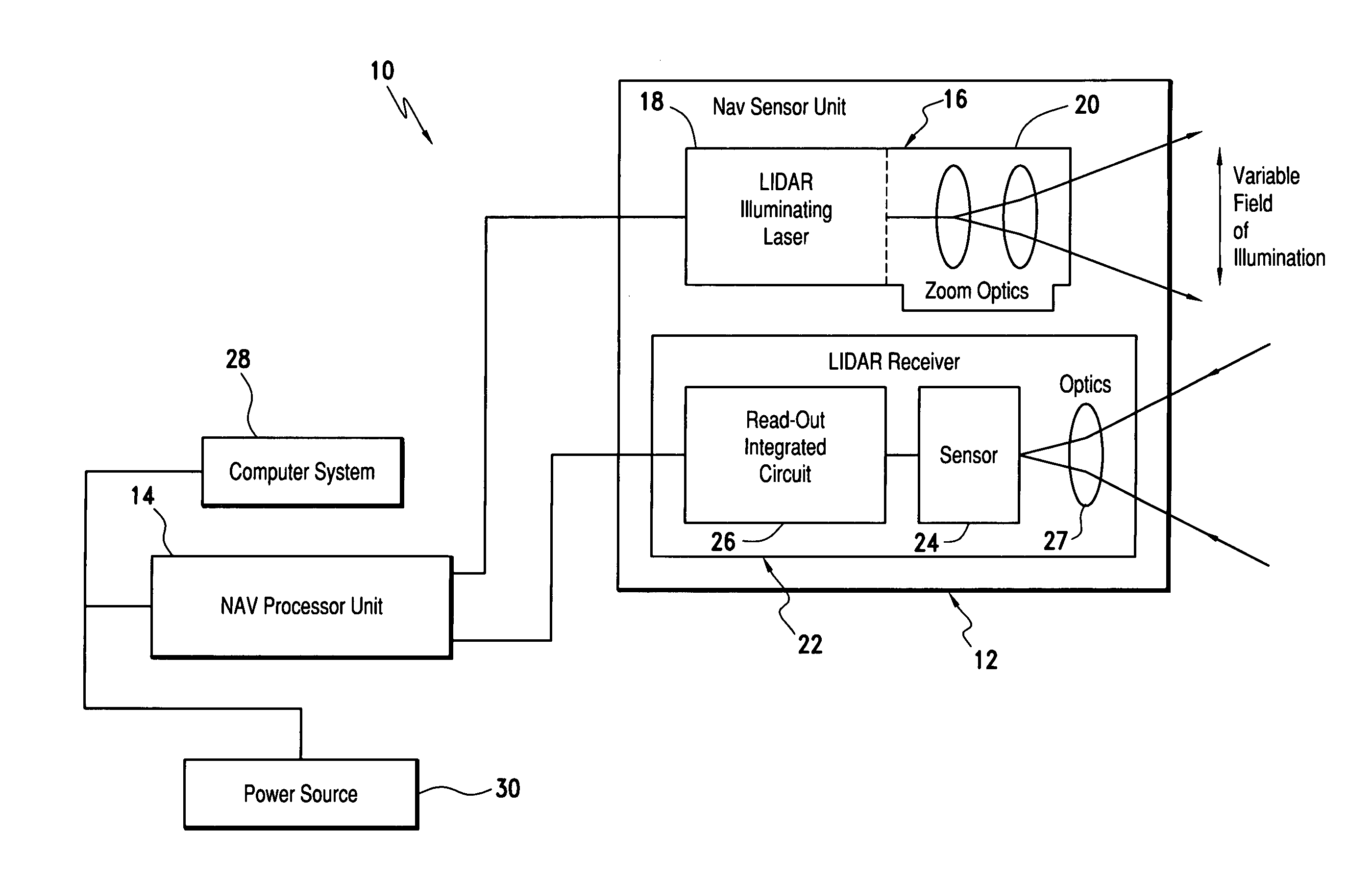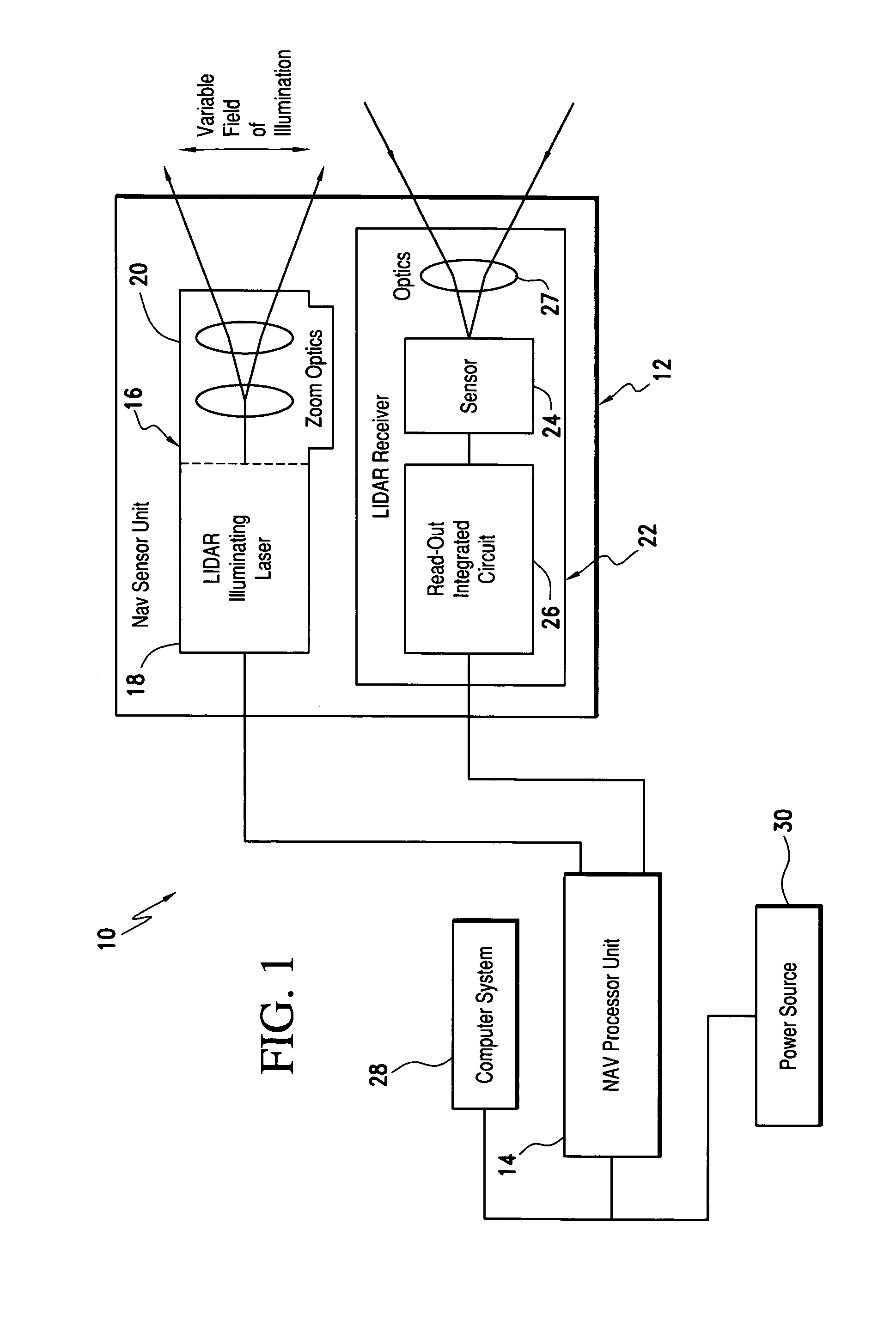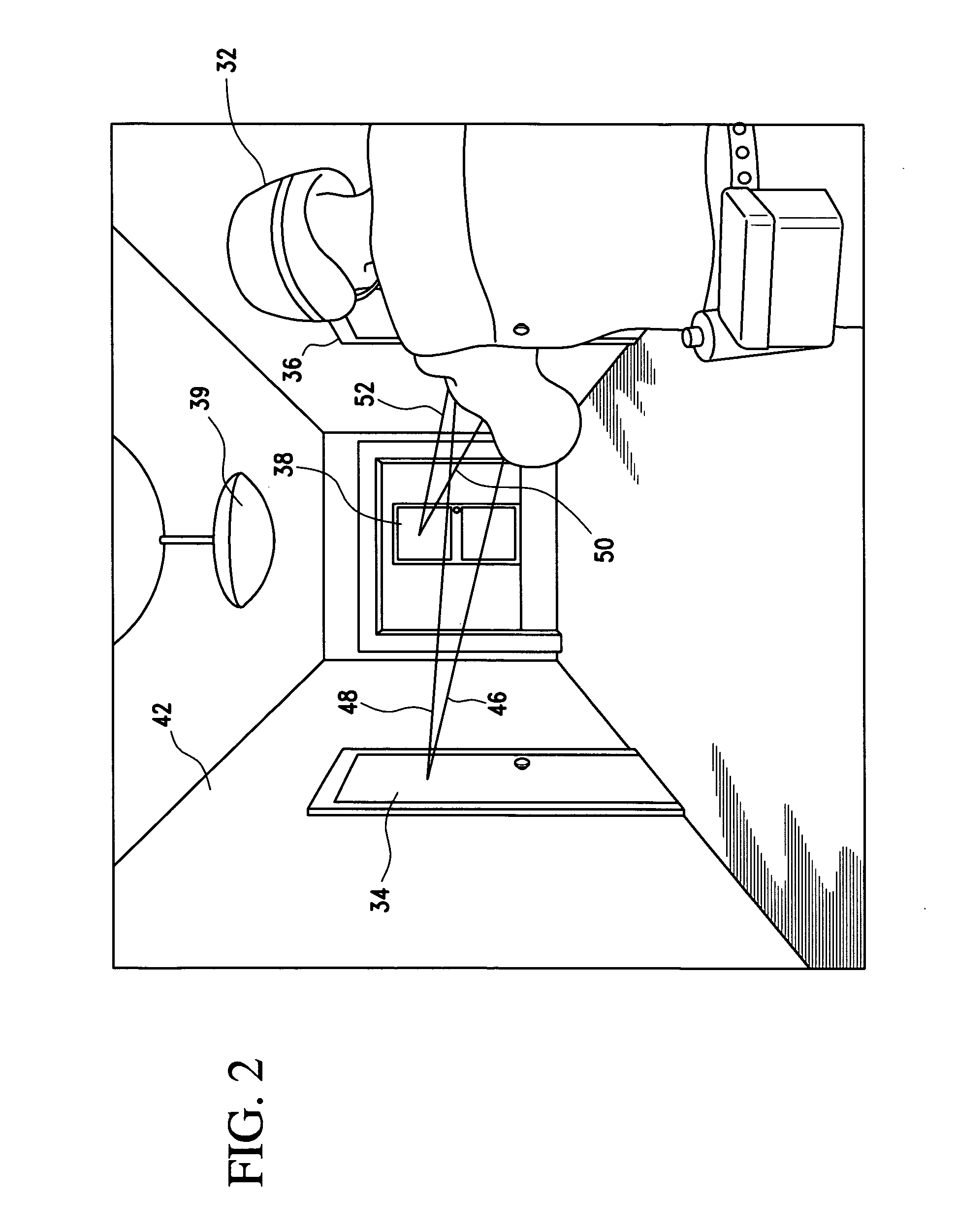Laser range finding system using variable field of illumination flash lidar
a laser range finding and variable field technology, applied in the direction of distance measurement, instruments, surveying and navigation, etc., can solve the problems of quadratic fall-off of illumination with range, distortion or misperception, and location and mapping, and achieve the effect of reducing the number of laser beams
- Summary
- Abstract
- Description
- Claims
- Application Information
AI Technical Summary
Benefits of technology
Problems solved by technology
Method used
Image
Examples
Embodiment Construction
[0021]Referring now to the drawings and the characters of reference marked thereon, FIG. 1 illustrates a laser range finding system, designated generally as 10. A light detection and ranging (LIDAR) sensor unit (SU), designated generally as 12, transmits light pulses and receives resulting input light signals reflected from objects within its field of view. A LIDAR processor unit (PU) 14 is operatively associated with the LIDAR SU 12. The LIDAR PU 14 utilizes flash LIDAR ranging.
[0022]The SU 12 includes a flash LIDAR illuminating laser source 16 for transmitting light pulses. The LIDAR illuminating laser source includes an illuminating laser 18 and zoom optics 20 operatively associated with the laser 18. A LIDAR receiver, designated generally as 22, receives resulting input light signals reflected from the objects within the field of view. The LIDAR receiver includes a sensor 24; and, a flash readout integrated circuit (IC) 26. The flash readout IC 26 measures the transit time of th...
PUM
 Login to View More
Login to View More Abstract
Description
Claims
Application Information
 Login to View More
Login to View More - R&D
- Intellectual Property
- Life Sciences
- Materials
- Tech Scout
- Unparalleled Data Quality
- Higher Quality Content
- 60% Fewer Hallucinations
Browse by: Latest US Patents, China's latest patents, Technical Efficacy Thesaurus, Application Domain, Technology Topic, Popular Technical Reports.
© 2025 PatSnap. All rights reserved.Legal|Privacy policy|Modern Slavery Act Transparency Statement|Sitemap|About US| Contact US: help@patsnap.com



